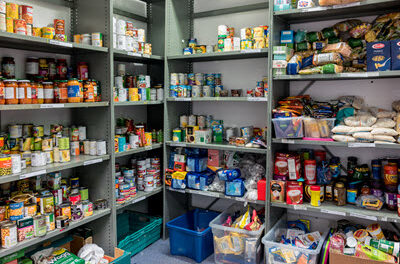In an age where headlines are dominated by a relentless barrage of crises, from natural disasters to economic upheavals and global pandemics, the concept of preparedness has taken center stage. However, as the public is bombarded with a constant stream of doomsday scenarios and survival conspiracies, a new and insidious threat has emerged: preparedness complacency. This phenomenon, characterized by a growing apathy towards genuine threats and a dismissive attitude towards the importance of readiness, is quietly eroding our collective resilience and leaving us vulnerable to the very disasters we seek to mitigate.
At the heart of this issue lies the over-saturation of crisis mode thinking. With each passing day, we are inundated with a cacophony of alarming headlines, dire predictions, and sensationalized accounts of impending doom. From climate change and economic collapses to asteroid impacts and zombie apocalypses, the sheer volume and variety of potential catastrophes have become overwhelming. As a result, many individuals have become desensitized to the genuine risks that threaten our communities, dismissing them as just another doomsday scenario in an endless sea of speculation.
The Allure of Survival Conspiracies
This desensitization is further compounded by the proliferation of survival conspiracies and fringe theories that have gained traction in recent years. Fueled by social media echo chambers and a mistrust of traditional institutions, these conspiracies often paint a picture of hidden agendas, government cover-ups, and nefarious plots that aim to control or deceive the masses. While some of these theories may contain grains of truth, they are often distorted, exaggerated, and divorced from reality, leading to a distorted perception of the true nature of the threats we face.
The danger of this over-saturation and conspiracy-driven narrative is that it breeds a sense of helplessness and resignation among the public. When faced with an unrelenting barrage of doomsday scenarios, many individuals begin to feel that preparedness is a futile endeavor, that no matter what steps they take, they will ultimately be powerless in the face of an inevitable catastrophe. This defeatist mentality can lead to a dangerous apathy, where individuals abandon even the most basic preparedness measures, leaving themselves and their communities vulnerable to the very disasters they fear.
The Pitfalls of Complacency: Lessons from the Pandemic
A stark example of the consequences of preparedness complacency can be seen in the recent global pandemic. Despite years of warnings from public health experts and the existence of extensive preparedness plans, many communities found themselves woefully unprepared when the crisis struck. Grocery store shelves were stripped bare, essential supplies like toilet paper became scarce, and families were left scrambling to secure basic necessities.
This lack of readiness, even in the face of an impending crisis, highlights the insidious nature of preparedness complacency. The over-saturation of crisis mode thinking and the proliferation of survival conspiracies had created a false sense of security, leading many to believe that they were adequately prepared for any eventuality. However, when the reality of the pandemic hit, it became clear that our collective complacency had left us vulnerable and exposed.
Cultivating a Balanced Approach to Preparedness
To combat this dangerous trend of preparedness complacency, it is essential that we adopt a more balanced and measured approach to crisis readiness. Rather than succumbing to the allure of sensationalized doomsday scenarios and fringe conspiracies, we must focus on evidence-based risk assessments and practical preparedness strategies. This requires a concerted effort to cut through the noise and disinformation, seeking out reliable sources of information and expert guidance.
One key aspect of this balanced approach is the cultivation of a resilient mindset. Rather than viewing preparedness as a one-time event or a response to a specific threat, we must recognize it as an ongoing process of adaptation and self-reliance. By fostering a culture of preparedness that emphasizes personal responsibility, community collaboration, and mental fortitude, we can inoculate ourselves against the apathy and resignation that threaten to undermine our collective resilience.
At the individual level, this means taking proactive steps to educate ourselves about the genuine risks we face and developing practical skills and knowledge to mitigate them. This can include learning basic first aid, familiarizing ourselves with local emergency response plans, and maintaining a well-stocked emergency kit. By taking ownership of our own preparedness, we can regain a sense of control and empowerment, even in the face of uncertain times.
Refocusing Our Efforts: Building Community Resilience
To truly overcome the perils of preparedness complacency, we must refocus our efforts on building community resilience. This involves fostering a sense of solidarity and mutual support, where individuals and communities work together to pool resources, share knowledge, and develop robust systems that can withstand the impacts of crises.
By organizing community preparedness workshops, participating in local emergency response drills, and advocating for policies that prioritize disaster risk reduction, we can create a culture of readiness that extends beyond individual households. This collaborative approach not only enhances our collective capacity to respond to disasters but also helps to combat the sense of isolation and helplessness that can fuel complacency.
Furthermore, it is crucial that we approach preparedness with a critical eye, questioning the validity of the information we encounter and seeking out diverse perspectives. By cultivating a healthy skepticism towards sensationalized claims and conspiracy theories, we can avoid falling prey to the fear and paranoia that undermine effective preparedness efforts. Instead, we must rely on evidence-based practices and the expertise of credible sources, such as scientific institutions, emergency management agencies, and reputable media outlets.
Conclusion: Embracing a New Era of Preparedness
In a world where crises are an inevitable part of the human experience, preparedness is not a luxury, but a necessity. The recent pandemic has served as a powerful reminder of the dangers of complacency and the importance of proactive, community-oriented readiness. By recognizing the pitfalls of over-saturation and conspiracy-driven narratives, and refocusing our efforts on practical skills, mental resilience, and collaborative action, we can build a culture of preparedness that is grounded in reality and empowers us to face the challenges ahead with confidence and resolve.
As we move forward, let us embrace a new era of preparedness – one that is characterized by a balanced, evidence-based approach, a strong sense of community, and an unwavering commitment to building a more resilient future. Only by working together, staying vigilant, and continually adapting to the evolving landscape of risks, can we truly safeguard ourselves, our families, and our communities from the perils of complacency and ensure that we are ready to weather any storm that comes our way.








